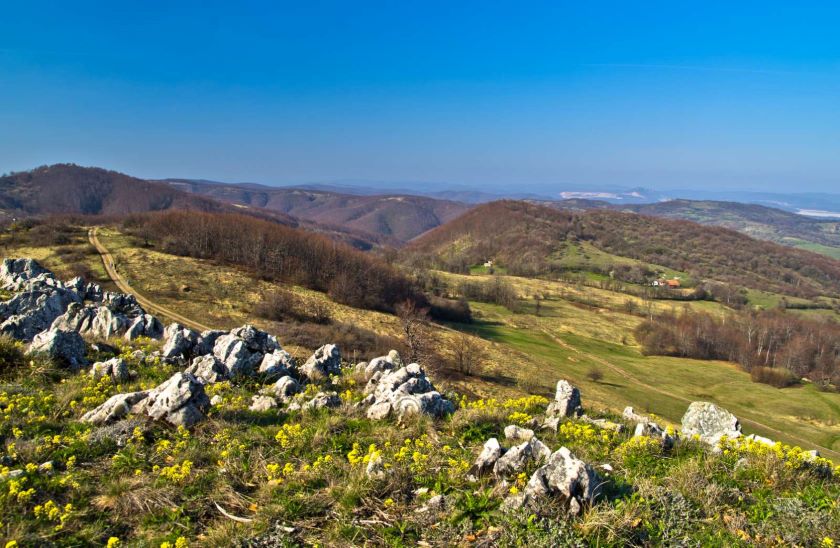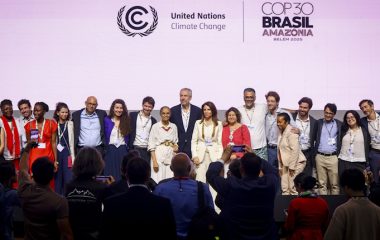
Photo: iStock
Dundee Precious Metals intends to open a gold mine and process the ore using cyanide in the Homolje area in Serbia. Environmental and local associations oppose the project and argue exploitation would endanger the environment, primarily watercourses. The Kreni-promeni platform launched a petition against the gold mine.
Not far from the village of Laznica, in the municipalities of Žagubica and Majdanpek in eastern Serbia, Canada-based Dundee Precious Metals plans to open a gold mine, Potaj čuka – Tisnica. The company intends to use the process of extracting gold with cyanide.
Cyanide leaching makes it profitable to mine ore that has a lower percentage of gold, like the one found in the Homolje area. However, the compound affects living organisms quickly, devastating the environment.
Cyanide affects living organisms quickly and devastates the environment
According to the plan, the mine would work for seven years, and Serbia would earn EUR 43 million in ore rent, lawyer Aleksandar Grujić told N1 television. The estimated value of the investment is EUR 186 million. The area of exploitation would spread on 292 square kilometers.
Approximately 48.3 million tons of overburden and 19.3 million tons of ore would be excavated – a total of 67.5 million tons of excavated terrain, according to the Mašina portal. The mine would also have 7-megaton tailings dump on Bigar hill.
Locals oppose the mining project
Citizens and environmental activists say they would not allow pristine nature at the foot of Homolje to become a mine and a tailings pond.
“The mining works have not started here in Laznica yet, and that is good. Once it starts, it’s like cancer – it metastasizes,” commented environmental activist Aleksandar Jovanović Ćuta, who joined the locals in their struggle.
Residents believe the catastrophe would happen if a mine is opened and starts using cyanide – for farmers, vegetable growers, fruit growers, cattle breeders, fishermen, beekeepers. What else could anyone do there, worried citizens wonder.
“I urge that we do not allow exploration works to begin at all. Because once they come, we will have the same problem in five or ten years as we now have with Jadar. And their departure would be very expensive,” architect Sonja Pavlović says.
She referred to Rio Tinto’s lithium project in Jadar near Loznica, which has caused turmoil throughout Serbia. Activists expect the fight for nature conservation in the Homolje area would receive the deserved support.
A ton of ore for a gram of gold
The average quantity of gold is measured in grams per ton of ore. Exploitation would be done by the method of heap leaching. The ore is crushed, then spread over a large area, and sprayed with sodium cyanide.
Dundee also runs the Timok Gold Project in Serbia, which is in the development phase. The feasibility study for the Potaj čuka – Tisnica should be prepared at the beginning of next year.
Citizens say it loud and clear – they don’t want a gold mine
Homolje already has gold, ecologists say – its watercourses and the pristine nature in this part of Serbia. Over 12,000 signatures have been collected to date in a petition on the Kreni-promeni platform. The demands are addressed to the Government of Serbia and relevant ministries.

Gold that does not shine
The activists point to the dangers of cyanide leaching. The cleanest parts of Serbia could be poisoned. Open-pit mining, crushing, and grinding ore would result with substantial dust emissions. The region has the largest continuous forest area in Serbia. It is the largest drinking water reservoir in Serbia, and leaching with sodium cyanide would pollute the water.
Leaching is out of the question, says minister
Deputy Prime Minister and Minister of Mining and Energy Zorana Mihajlović stated the use of cyanide in ore processing in Serbia would not be allowed. “If there are some alternative technologies, then we will talk, and otherwise it is out of the question,” she stressed.
The gold mine is in contradiction with the municipality’s development
Opening a mine would collide with the spatial plan of the municipality of Žagubica. The plan sets out guidelines for environmental protection, development of tourism, agriculture, forestry, hunting, and fishing.
Resistance in the region
The disaster in neighboring Romania that happened in 2000 at the Baia Mare site needs to be remembered. Then, 3.5 million cubic meters of cyanide-contaminated tailings from the local gold mine spilled into the Tisza and destroyed the ecosystem in 400 kilometers of the river’s basin.
Rosia Montana village is an example
One of the prominent struggles of citizens against mining projects that pose a danger to the environment also took place in Romania. In the Transylvanian village of Rosia Montana, locals fought for years against the opening of a gold mine. And they saved the village.
The mining company started buying houses in the area, but about 100 residents refused to sell them. With the support of environmentalists, architects, archaeologists, and lawyers, they fought in court against the corporation and the state. The main concern was the danger of leaching gold with cyanide, especially after the incident from Baia Mare. However, the dispute between the mining company and the Romanian government remains ongoing.
Opposing unwanted mining projects has been going on for decades in Romania and Greece
There is also a struggle in Greece. Citizens have been opposed to gold exploitation since 2003 in Halkidiki. The Greek government has considered opening gold mines across the country, with the idea that such investments would create jobs and bring hundreds of millions of euros into the economy. However, they have a huge impact on the environment and thus encounter strong resistance.
All said projects indicate how invasive the hunt for profit can be for local communities and environmental protection. The main argument in such a struggle is that mining can be sustainable only if the character of the region does not change and if it is carried out in the general interest of society.


















We will not be intimidated to sell our lands.We will fight in courts against Dundee and Serbia, we will fight on the ground and prevent opening of the mines. We will protect our forests rivers and live beings on Homolian mountains.We will prevail!